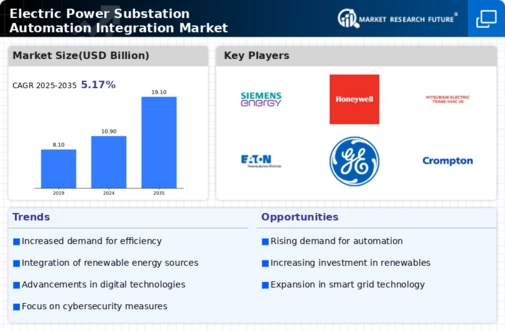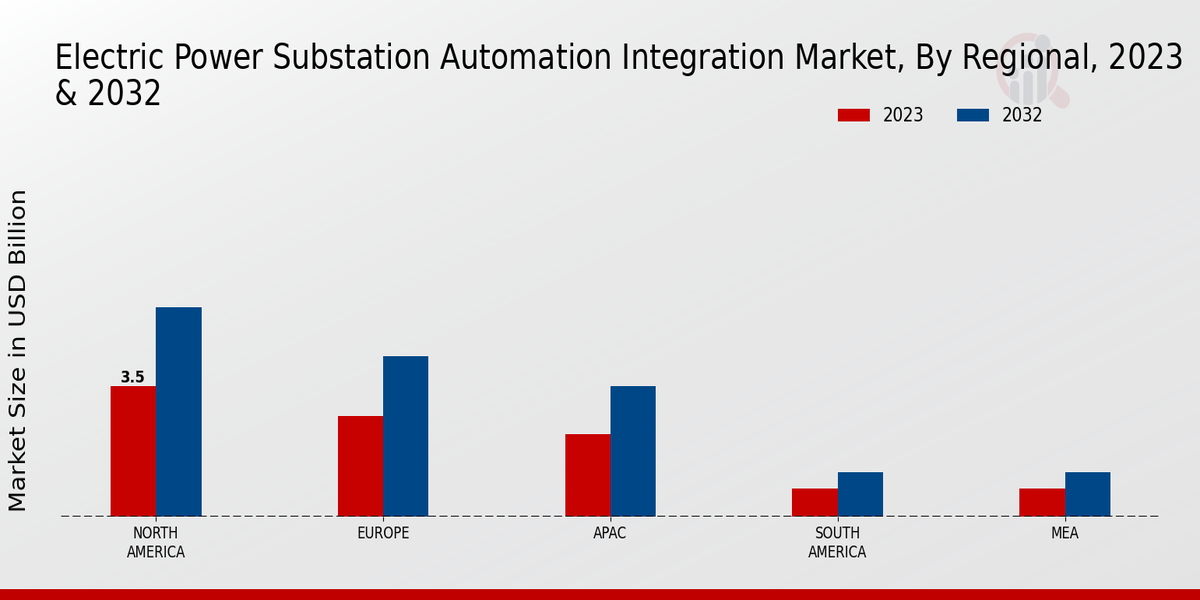Market Growth Projections
Government Initiatives and Regulations
Government initiatives play a crucial role in shaping the Global Electric Power Substation Automation Integration Market Industry. Regulatory frameworks aimed at enhancing energy efficiency and reducing carbon emissions are being established worldwide. For example, the European Union has implemented directives that encourage the modernization of electrical grids through automation. These regulations not only promote sustainability but also stimulate investments in substation automation technologies. As a result, the market is expected to grow significantly, with a projected value of 19.1 USD Billion by 2035, reflecting the positive impact of these governmental policies on industry growth.
Rising Focus on Renewable Energy Sources
The shift towards renewable energy sources significantly influences the Global Electric Power Substation Automation Integration Market Industry. As nations strive to meet sustainability goals, the integration of renewable energy into existing grids necessitates advanced substation automation solutions. For instance, countries like Germany and Denmark are leading the way in integrating wind and solar power, requiring sophisticated management systems to handle variable energy inputs. This transition not only enhances grid stability but also drives the demand for automation technologies that can efficiently manage these resources, thereby fostering market expansion.
Technological Advancements in Automation
Technological advancements are a driving force in the Global Electric Power Substation Automation Integration Market Industry. Innovations such as smart grid technologies, Internet of Things (IoT) integration, and advanced data analytics are transforming traditional substations into intelligent systems. These technologies facilitate real-time monitoring and control, enhancing the reliability and efficiency of power distribution. The adoption of these advancements is likely to contribute to a compound annual growth rate of 5.18% from 2025 to 2035. As utilities increasingly recognize the benefits of automation, investments in these technologies are expected to surge, further propelling market growth.
Increased Demand for Reliable Power Supply
The Global Electric Power Substation Automation Integration Market Industry experiences heightened demand for reliable power supply, driven by urbanization and industrial growth. As populations expand, the need for consistent electricity becomes paramount. For instance, countries like India and China are investing heavily in infrastructure to support their growing energy needs. This trend is reflected in the projected market value of 10.9 USD Billion in 2024, indicating a robust response to these demands. The integration of automation technologies in substations enhances operational efficiency, reduces downtime, and ensures that power distribution meets the rising consumption levels.
Growing Investments in Smart Grid Infrastructure
Investments in smart grid infrastructure are pivotal for the Global Electric Power Substation Automation Integration Market Industry. As utilities modernize their grids to improve efficiency and reliability, the need for automated substations becomes increasingly apparent. Countries such as the United States and Japan are allocating substantial funds to upgrade their electrical infrastructure, recognizing the long-term benefits of smart grid technologies. This trend is expected to result in a significant increase in market value, as stakeholders seek to enhance operational capabilities and meet the evolving demands of consumers.












